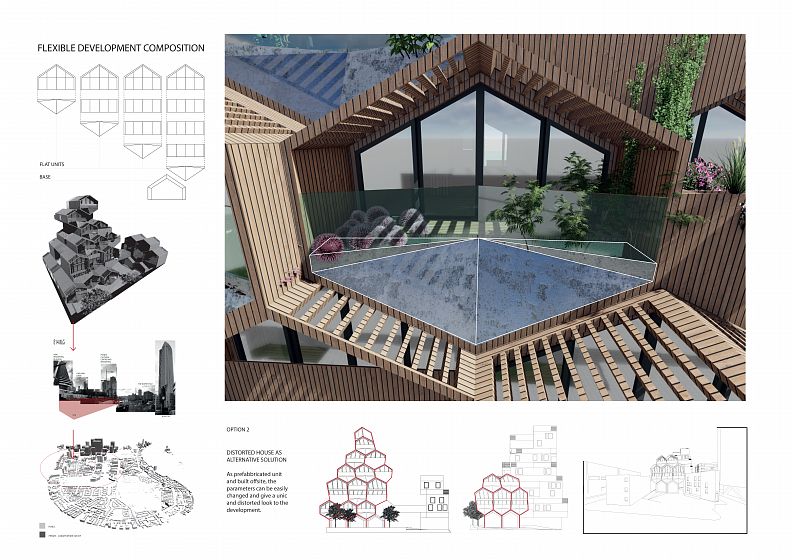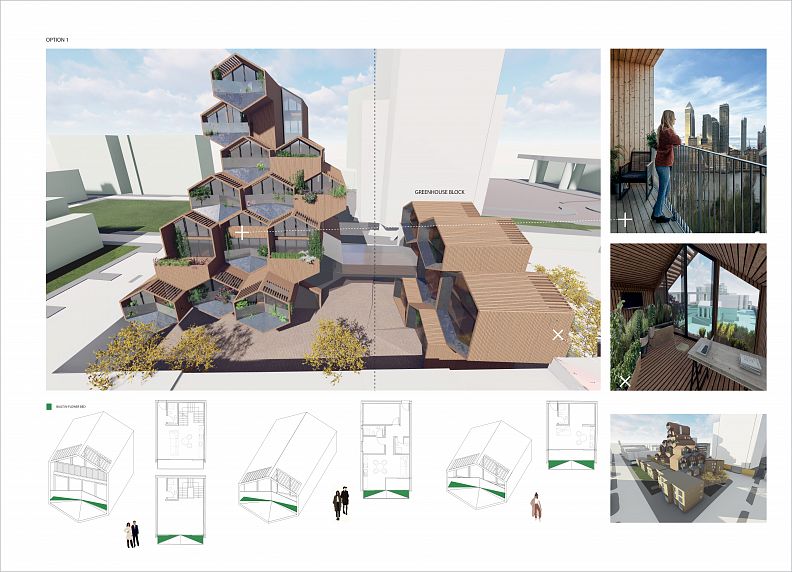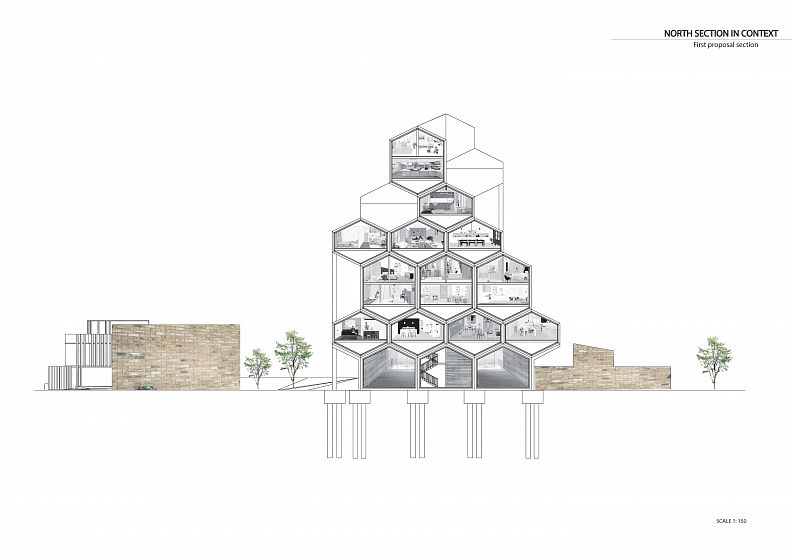Affordable Modular Houses + Community centre

Project idea
It is known that many people in the city are spending less time at home compared to those in the countryside due to long hours at work. On the other hand, ‘working from home’ has also become more common. Flexible and adaptive structures, to create systems which transform the space could be just this solution. I have looked at small home examples, understanding the basic needs of their occupants for a comfortable living, and to design homes which are truly affordable, but pleasant to live in. Emphases on sustainability is also fundamental, and the homes designed for these groups of individuals would need to be efficient or even self-sustainable.
Project description
This is an affordable housing development that can be adapted with different formations in a range of sites. The honeycomb-shaped structure has an interchangeable nature; the ability to change location or position whilst keeping costs consistent by being manufactured by machinery offsite.
As affordable housing models are spread across London, it is important to use an original design to promote a new architectural language in the city that inspires people to live and design more comfortable and sustainable houses. The structures allow the inhabitant to grow their own fresh
produce, reducing reliance on shops and supermarkets where supply is heavily influenced by external factors. This structure easily adapts to the nature of the UK economy, alongside the shortage of affordable housing.
Technical information
The support for the modular houses is composed of steel whiles the units are composed mainly by CLT. Rainwater collection, use of photovoltaic and solar panels are an important feature for this project.
DISTORTED HOUSE AS ALTERNATIVE SOLUTION
As prefabricated unit and built offsite, the parameters can be easily changed and give a unique and distorted look to the development.



















